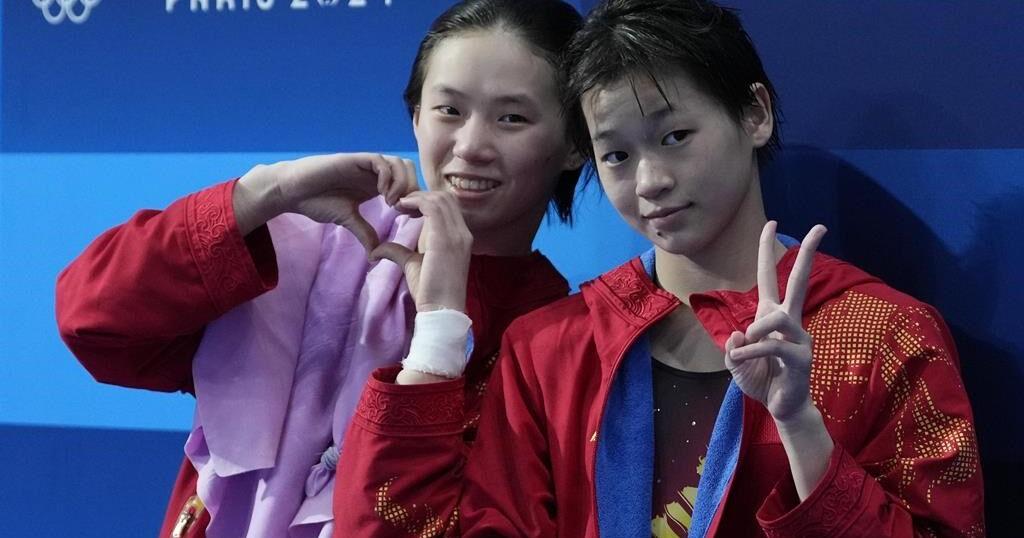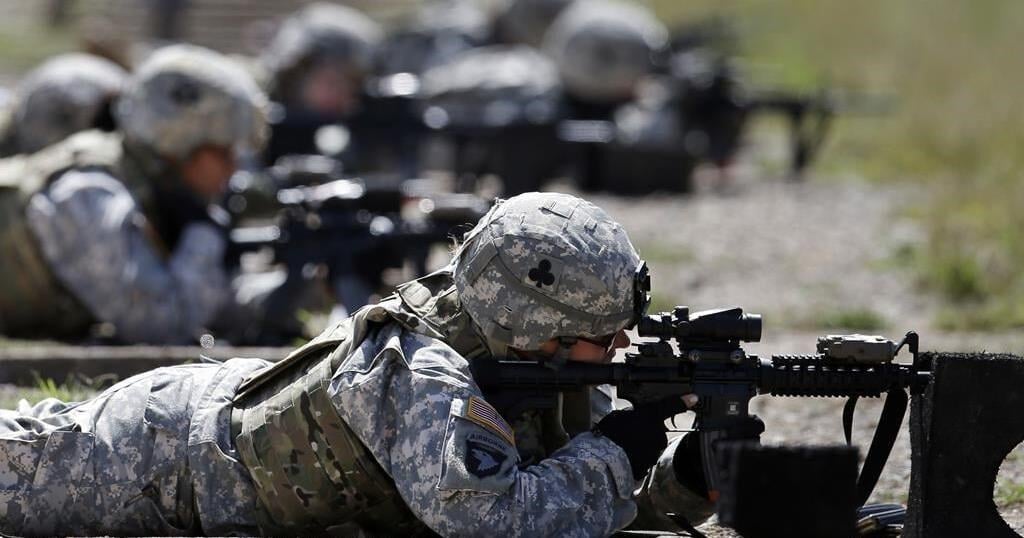SAINT-DENIS, France (AP) — North Korea won the silver in the women’s synchronized 10-meter platform event to capture the nation’s first ever Olympic diving medal, while China continued its dominance of the sport with another gold.
Chen Yuxi and Quan Hongchan took a commanding lead from the start Wednesday to secure China’s 50th Olympic diving gold medal all time.
The women led by nearly 14 points after two of their five dives, making it a competition for silver and bronze behind them. Chen won the same event in Tokyo, partnering with Zhang Jiaqi.
Chen and Quan scored a 359.10. The North Korean pair finished far behind at 315.90. It marked North Korea’s second medal of the Paris Games after winning a silver Tuesday in mixed doubles table tennis.
Jin Mi Jo and Mi Rae Kim hope to one day make a run at mighty China.
“We really wanted to give gold to our country but the performance was not done as we expected, as we tried, so we regret that,” Kim said through an interpreter. “The next time we do it we will try hard for the gold.”
North Korea skipped the Tokyo Games, citing concerns about the COVID-19 pandemic.
Andrea Spendolini-Sirieix and Lois Toulson of Great Britain took bronze with a score of 304.38.
“It was a tough competition, we knew before it that China was the team to beat and that Great Britain and the Canadians were going to be hard to defeat, but watching videos our coach told us to be aware of North Korea, and they did very well,” said four-time Olympian Alejandra Orozco of Mexico, who finished fifth.
China added to its medal haul in the sport it has dominated for decades. The Chinese took another step closer to an unprecedented sweep in the Olympic diving pool.
Ukrainian divers say they competed for those suffering through war
Kseniia Bailo and Sofiia Lyskun finished second-to-last and 74 points behind the winning Chinese pair — but the result really didn’t matter to the Ukrainian women.
Bailo, 19, told The Associated Press she dedicated Wednesday’s performance to everyone fighting to protect her war-torn homeland.
“I’m happy to be in the Olympics because I compete today for my country, for soldiers and for athletes and coaches who died in war. I’m really proud of me,” she said, sharing that it’s a challenge to focus on her sport. “It’s really difficult, it’s really hard because emotionally, I’m in the Ukraine. I can’t just live in Paris right now and don’t think about war, because my family is there, my friends are there. I need to compete for them.”
Bailo and Lyskun, 22, received warm cheers all morning. They scored a 285.00, ahead of the eighth-place French pair and 2.52 points behind Americans Jessica Parratto and Delaney Schnell in sixth.
A first-time Olympian from the Southern port city of Mykolaiv, Bailo hopes this is the start of a long career on the world stage.
“It’s a really good experience for me because it’s my first Olympics, so I’m really happy to be in the Olympic family,” she said. “It’s a really good job for me, because my country has a really bad problem. I feel like I can tell all the world about my country, about the situation, about athletes.”
Mexican flag bearer Orozco plans to retire after Olympics
Mexico’s Gabriela Agundez and Orozco had aimed for another medal after earning bronze at the Tokyo Olympics three years ago.
It was their final competition together as Orozco plans to retire. The women still have the individual platform event.
“We grew up together, we made a great team because we dreamt together and we built a legacy and history together,” said the 27-year-old Orozco from Guadalajara who was one of Mexico’s flag bearers. “We know that no matter what, we are one. We finished this today, and it was an honor to compete together on that platform.”
She earned silver in the synchronized platform at the 2012 London Games.
Orozco began pairing with the 23-year-old Garcia of La Paz after diving the first of her two Olympics alongside Paola Espinosa.
The Mexican women had plenty of support.
Brothers César and Azael Jáuregui, both university students in Northern Mexico, couldn’t wait to get to the pool. Azael made the 10-minute walk from the train station with a Mexican flag draped over his shoulders.
“It’s very special for me as a Mexican because we have like five Olympics in a row that the people are in the finals, they are getting medals, so for me and my brother coming to the diving for the first time it’s a really good experience,” César said. “We are hoping to see medals and not only medals we hope to see our divers enjoy it and be happy with their results.”
___
AP Summer Olympics:

























